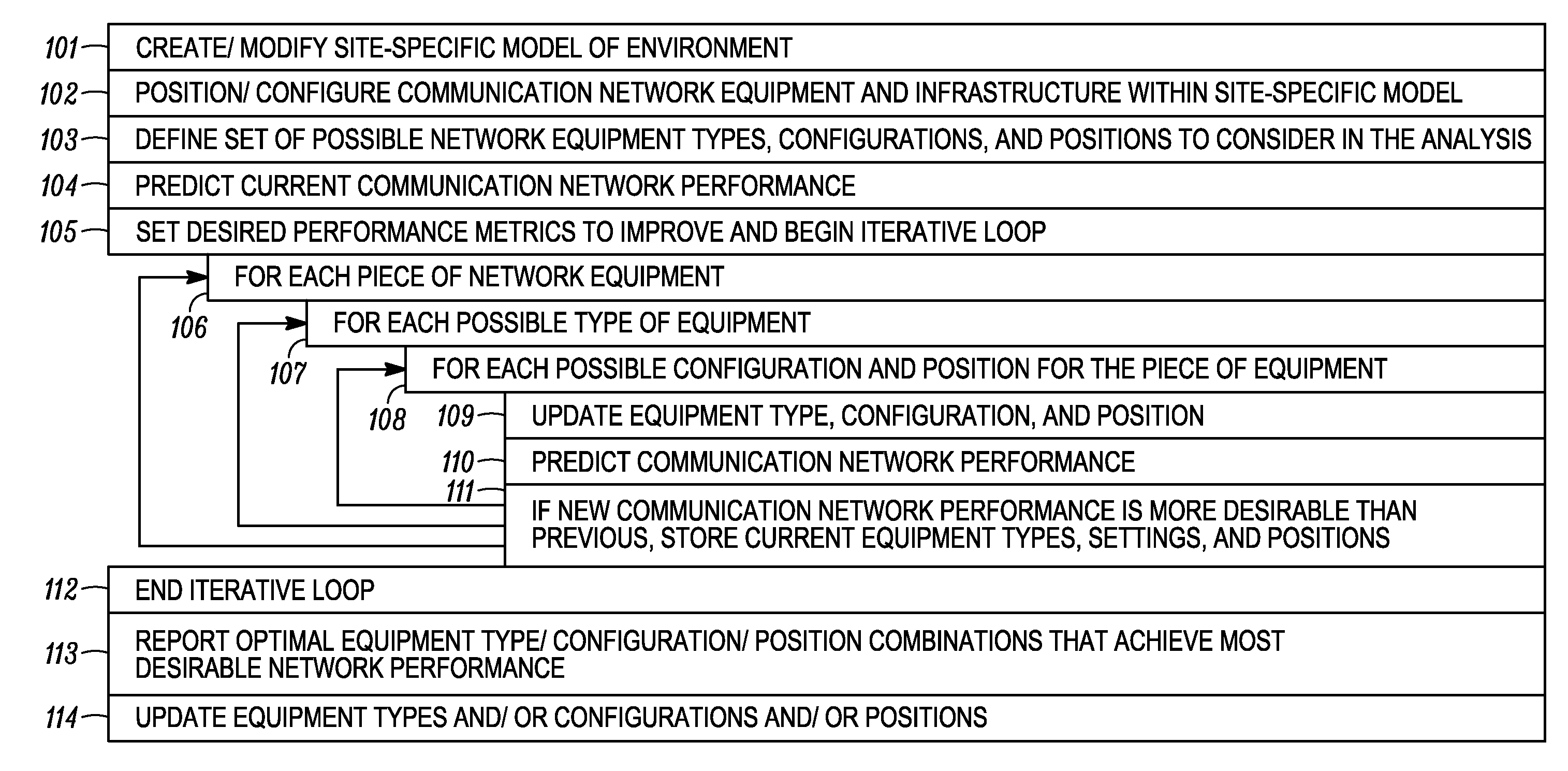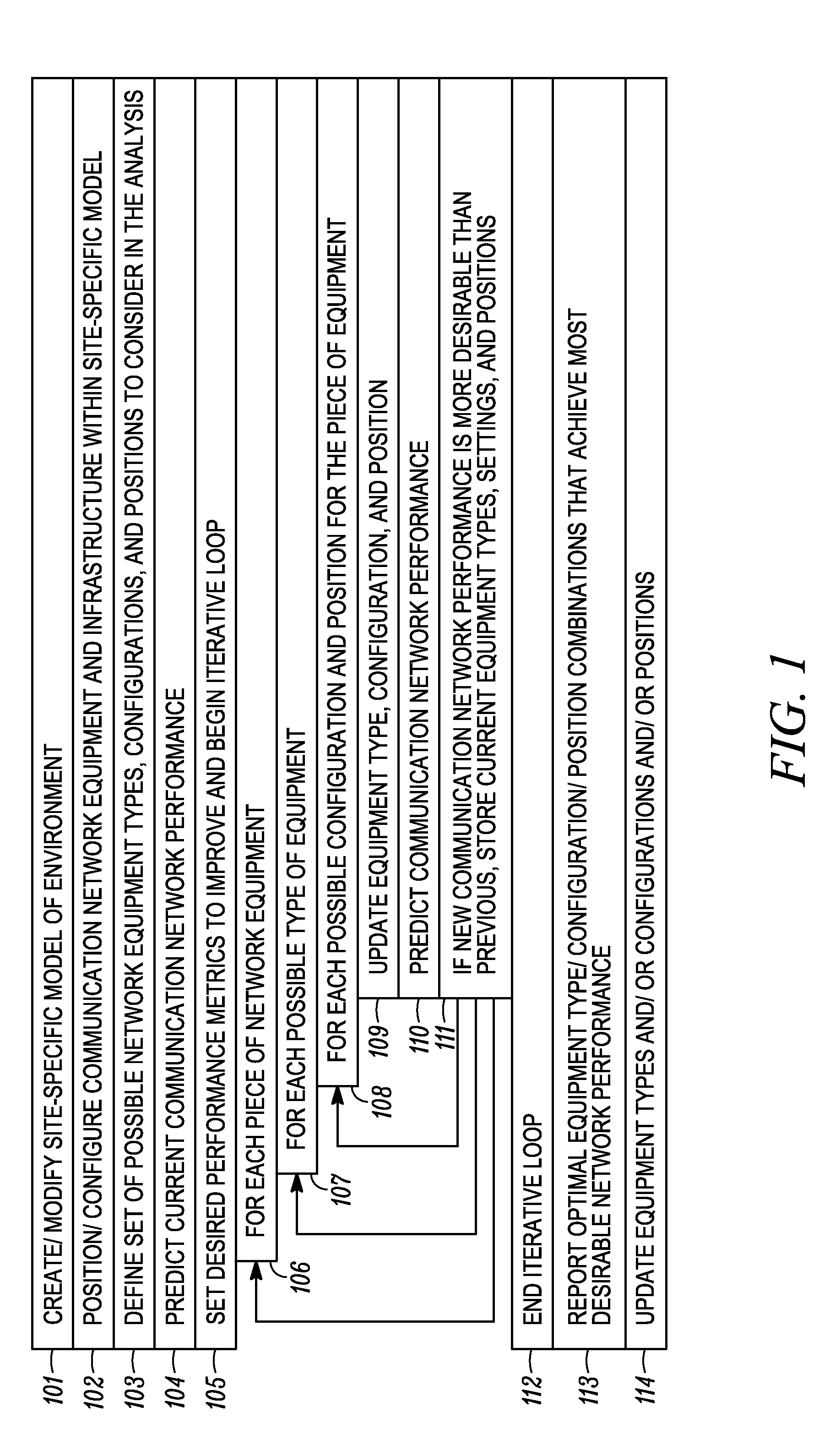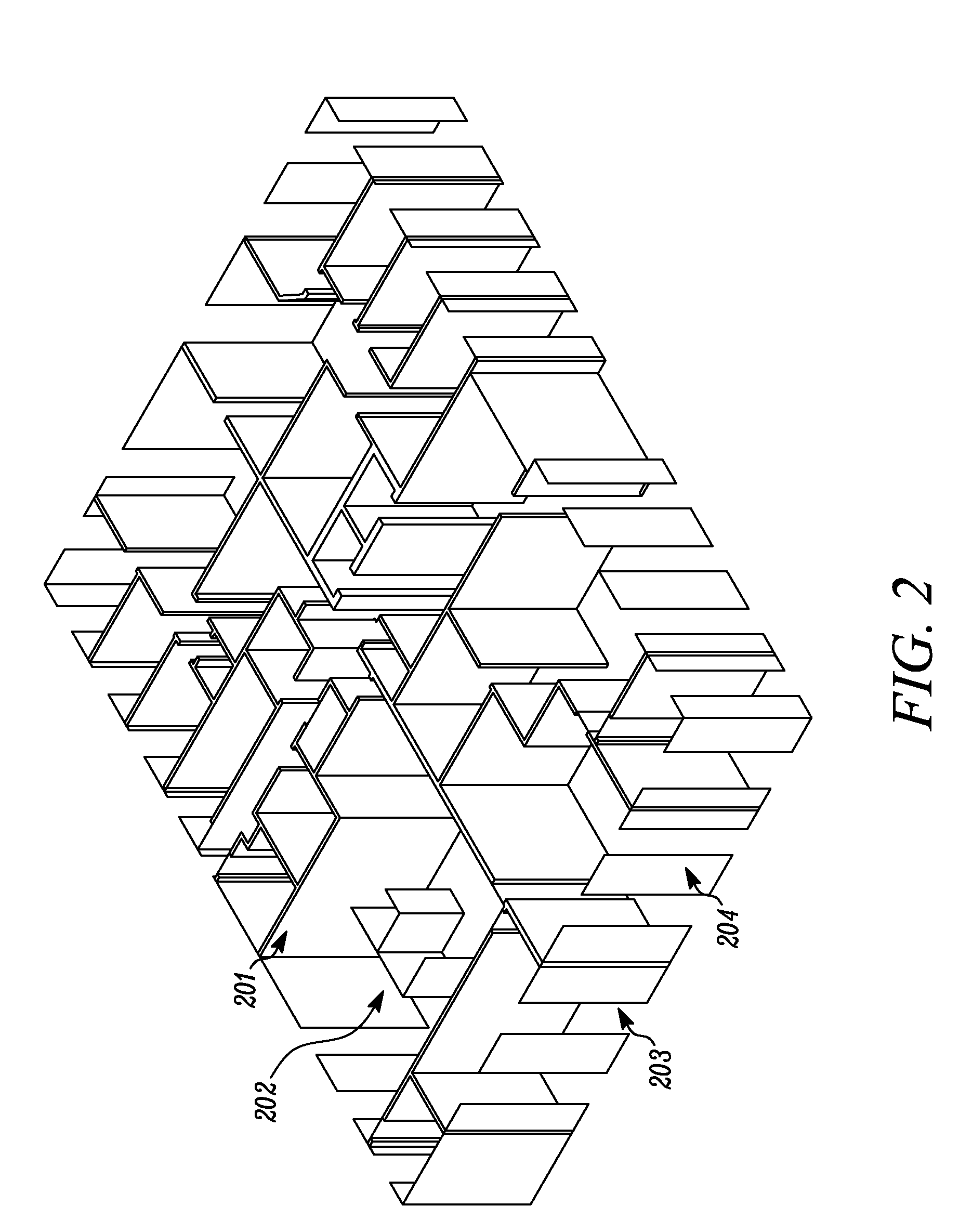As data communications use increases,
radio frequency (RF) coverage within and around buildings and
signal penetration into buildings from outside transmitting sources has quickly become an important design issue for network engineers who must design and deploy
cellular telephone systems,
paging systems, wireless or wired computer networks, or new
wireless systems and technologies such as personal communication networks or wireless local area networks (WLANs).
A common problem for wireless networks is inadequate coverage, or a “dead zone” in a specific location, such as a
conference room.
Such dead zones may actually be due to interference, rather than lack of desired
signal.
It is understood that an indoor wireless PBX (private
branch exchange)
system or wireless
local area network (WLAN) can be rendered useless by interference from nearby, similar systems.
The costs of in-building and
microcell devices which provide wireless coverage are diminishing, and the
workload for RF engineers and technicians to install and manage these on-premises systems is increasing sharply.
While most of the above papers describe a comparison of measured versus predicted RF
signal coverage, or describe methods for representing and displaying predicted performance data, they do not report a comprehensive method for optimizing or adjusting the parameters of equipment settings such as power levels, channelization, or data rates, etc. within an environment to affect a desired behavior in an actual operating network or a planned network.
Furthermore, the above mentioned propagation papers do not teach a way to autonomously allow a network to be properly provisioned for the allocation of multiple classes of data users in a
wireless network, nor do they teach any type of display of such performance or the comparisons of predicted versus measured performance that would be due to proper feedback of predicted
performance results to the operational wireless infrastructure.
While other prior art listed below considers network
adaptive control and feedback based on
simulation or preset specifications, no work has considered using
a site-specific wireless
environmental model, that allows a user to simultaneously view the physical environment,
control network performance parameters, and see the performance of the network in an adaptive manner.
Additionally, no one has considered the importance of properly configuring, regulating, or controlling the wireless infrastructure in order to properly provision various classes of simultaneous
wireless data users in an in-building network, where accurate site-specific propagation modeling is at the heart of driving and setting operating points of an in-building network, so that proper ongoing performance can be carried out in real-time or near real-time as the network changes over time and space.
The “
Radio Propagation” and “Site-Specific” papers make reference to 3-D modeling, but do not offer novel methods for utilizing the 3-D modeling to carry out automatic equipment configurations or parameter adjustments, nor do they contemplate any type of
autonomous control or feedback that uses the predictions to drive, in real time, the actual network performance.
In many cases, the
wireless network interferes with itself, forcing the designer to carefully analyze many different equipment configurations in order to achieve proper performance.
There are many
computer aided design (CAD) products on the market that can be used to aid in some manner for wireless design or optimization, but none consider the in-building data
scenario with site-specific control and autonomous feedback for network provisioning and scheduling in and around buildings and campuses.
PLAnet also provides facilities for optimizing the channel settings of wireless transceivers within the environment, but does not provide for further adaptive
transceiver configurations beyond channel settings.
None of the aforementioned design tools have an automated facility for determining the ideal configurations or establishing pre-set operating points for
wireless LAN transceivers or other data-centric modems modeled in
a site-specific environment in order to achieve some optimal or desired overall or individual network performance.
Furthermore, none of the aforementioned design tools contemplate an automated facility for determining the ideal configurations for
wireless data transceivers modeled in a 3-D environment in order to achieve some optimal network performance, while simultaneously displaying the physical location of network assets on a site-
specific model of the physical environment.
Optimizer™, however, does not consider the physical environment or the detailed specifications or site-specific placements or interconnections of equipment involved in the network, thereby failing to offer the added benefit of
visualization of
network configuration (valuable for design, deployment, and on-going maintenance, since indoor wireless antennas are often hidden), and further suffering from less accurate modeling since site-specific data is not used by the application.
In addition, because Optimizer™ requires measurement data from an existing network, it is not applicable to networks being planned and not yet deployed.
ScoreBoard™, however, does not consider the physical environment or the detailed specifications or site-specific placements or interconnections of equipment involved in the network, thereby failing to offer the added benefit of
visualization of
network configuration (valuable for design, deployment, and on-going maintenance since indoor network components such as antennas are often hidden), and further suffering from less accurate modeling since site-specific propagation or
environmental data is not used by the application.
In addition, because ScoreBoard™ requires measurement data from an existing network, it is not as applicable to networks being planned and not yet deployed.
OPAS32, however, does not consider the physical environment or the detailed specifications or site-specific placements or interconnections of equipment involved in the network, thereby failing to offer the added benefit of
visualization of
network configuration (valuable for design and on-going maintenance), and further suffering from less accurate modeling since site-specific data is not used by the application.
In addition, because OPAS32 requires measurement data from an existing network, it is not applicable to networks being planned and not yet deployed.
E-NOS™, however, does not consider the physical environment or the detailed specifications or site-specific placements or interconnections of equipment involved in the network, thereby failing to offer the added benefit of visualization of network configuration (valuable for design and on-going maintenance), and further suffering from less accurate modeling since site-specific data is not used by the application.
In addition, because E-NOS™ requires measurement data from an existing network, it is not applicable to networks being planned and not yet deployed.
Visionael does not use site-specific environmental information or wireless
prediction methods for predicting or measuring network performance, nor do they provide support for predicting, measuring, optimizing or controlling parameters that are fundamental to wireless networks.
Furthermore, they do not provide means for controlling a wide range of
wireless network users for desired performance throughout a network.
 Login to View More
Login to View More  Login to View More
Login to View More 


